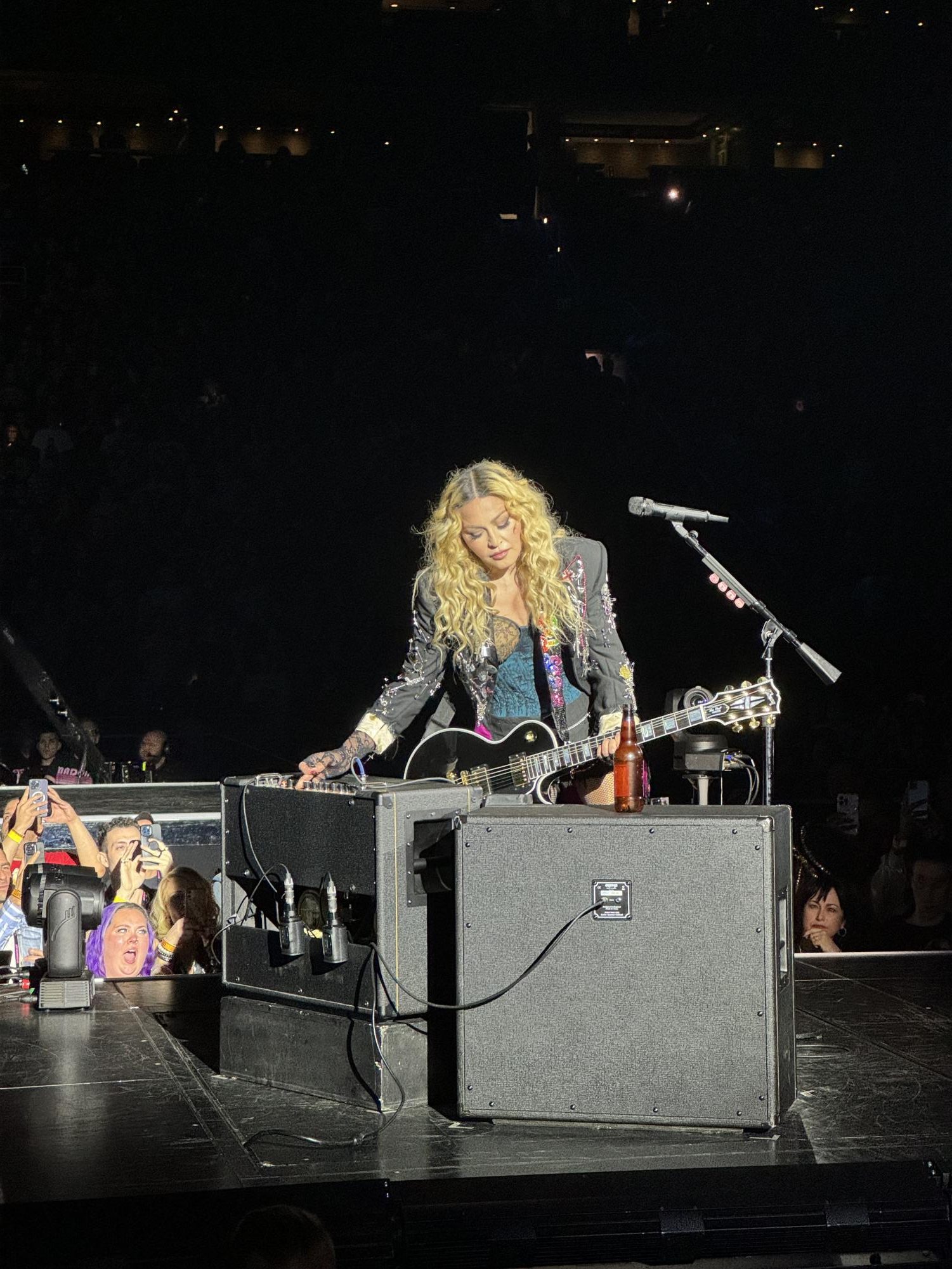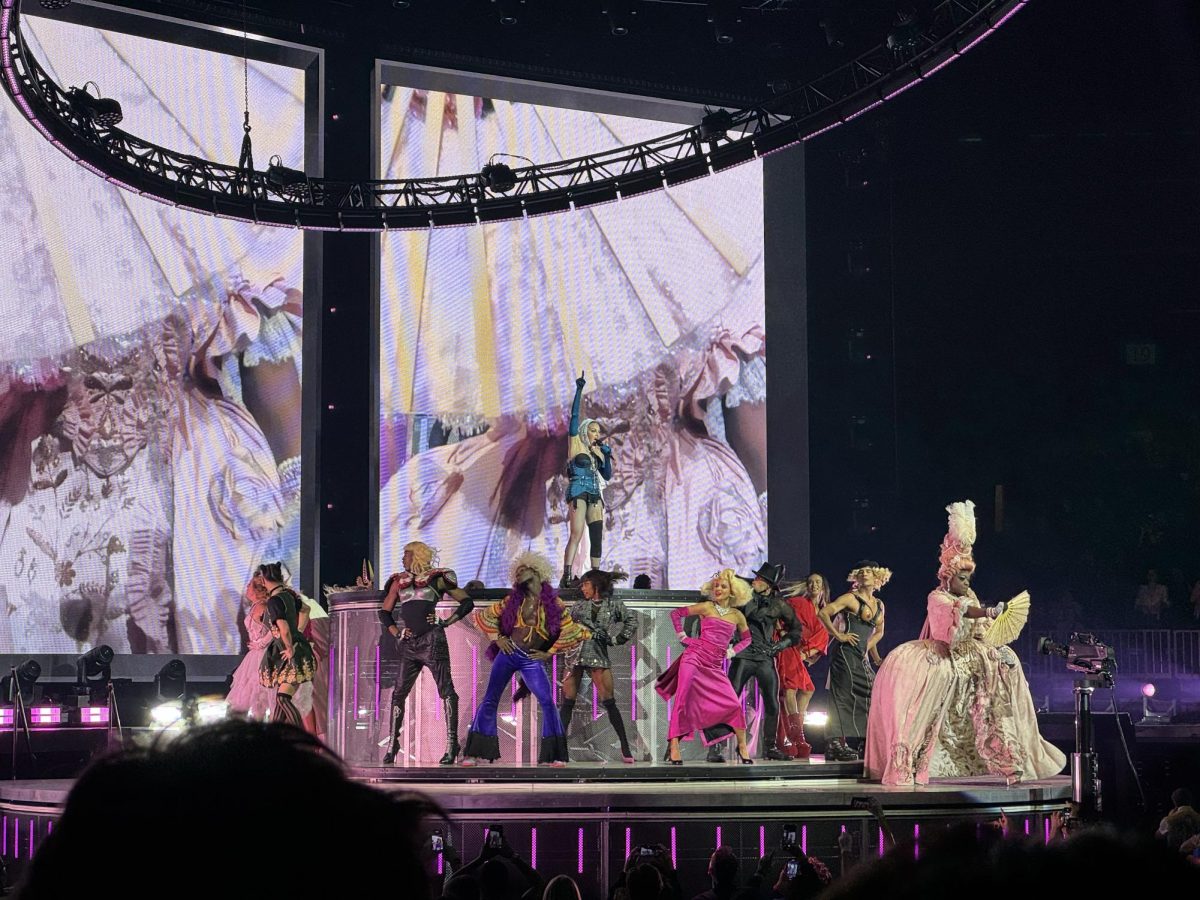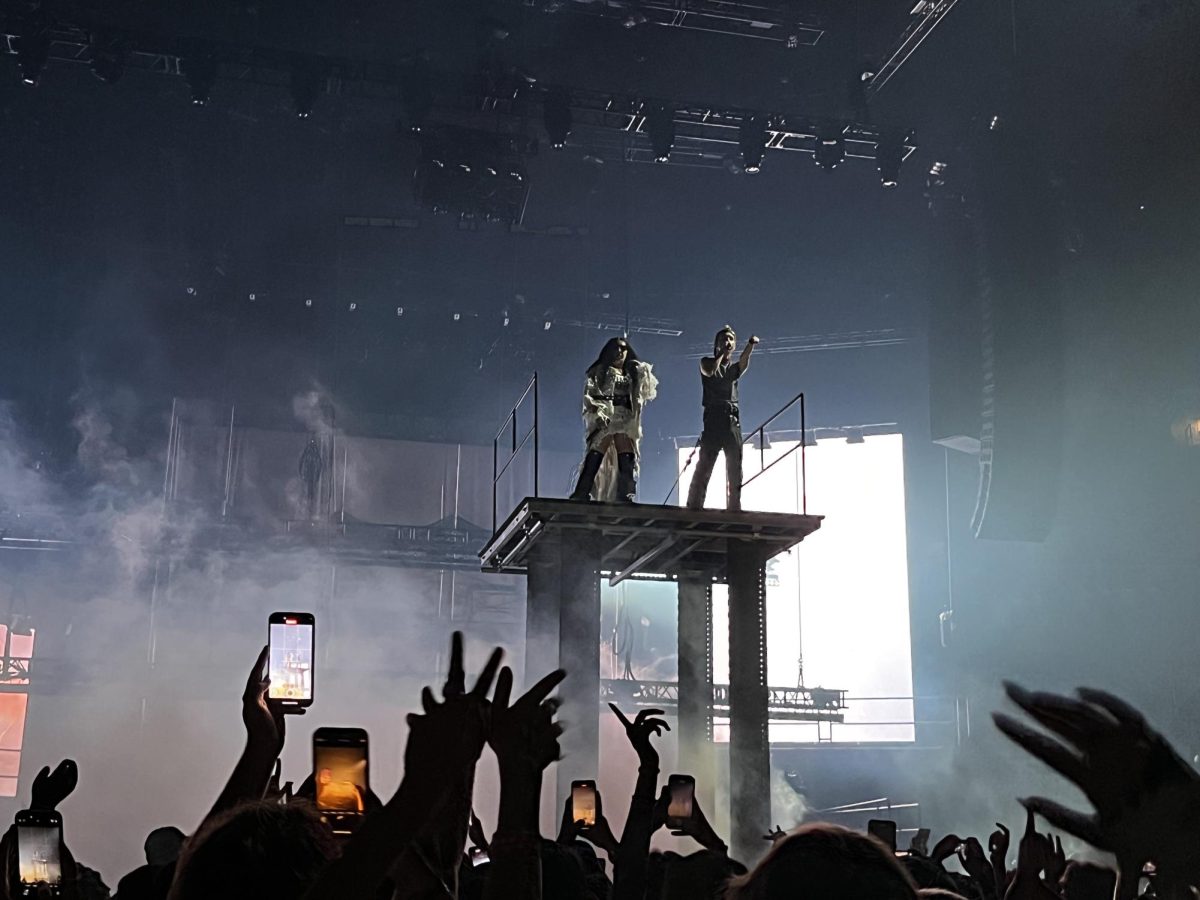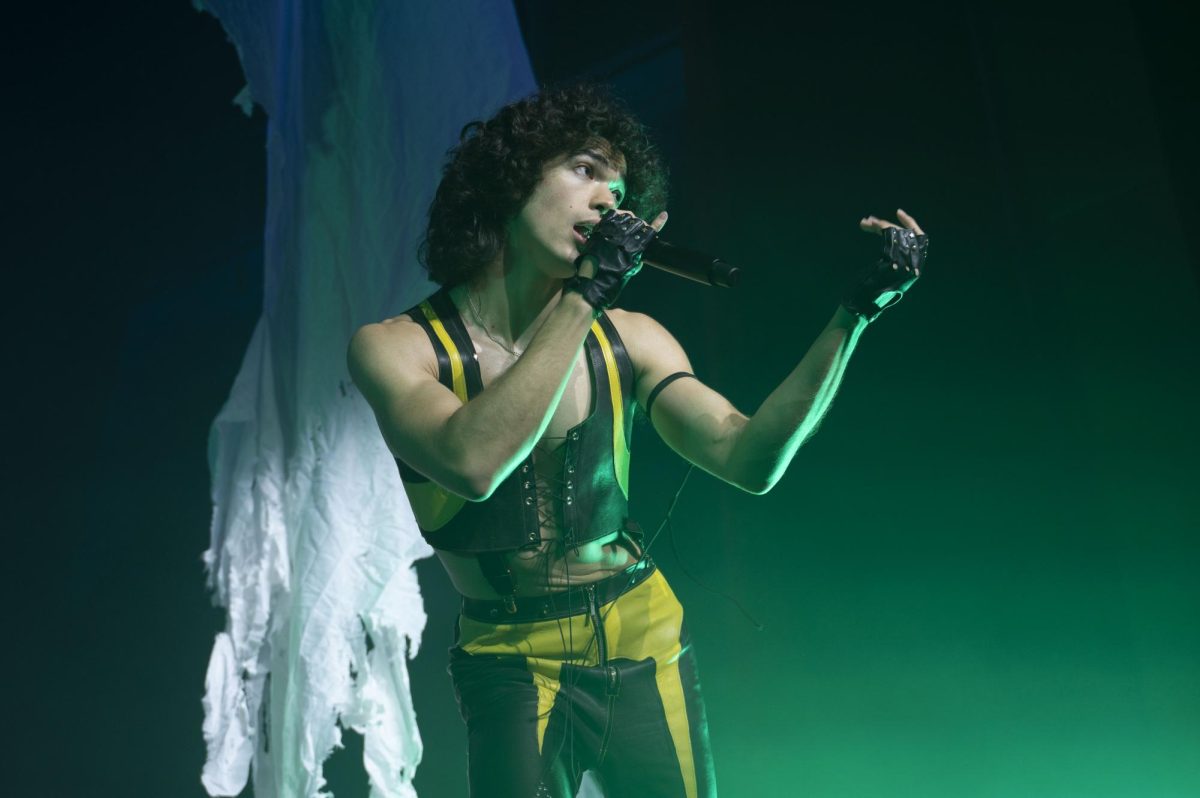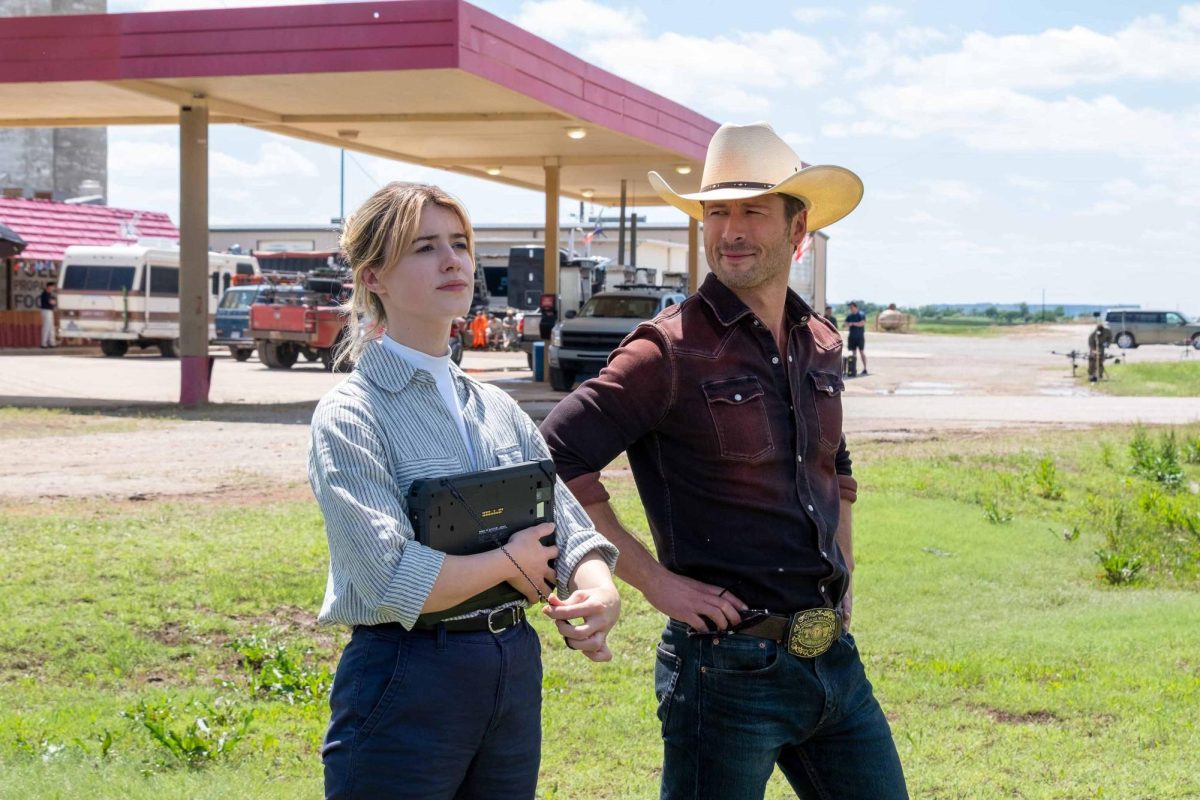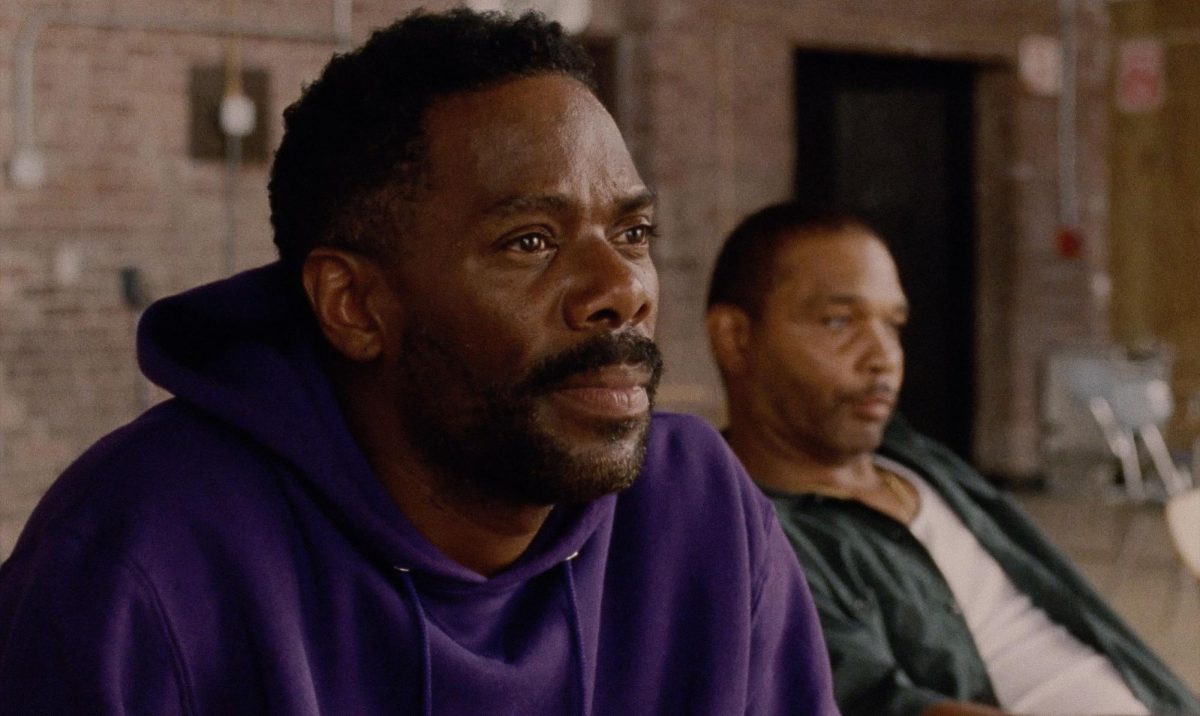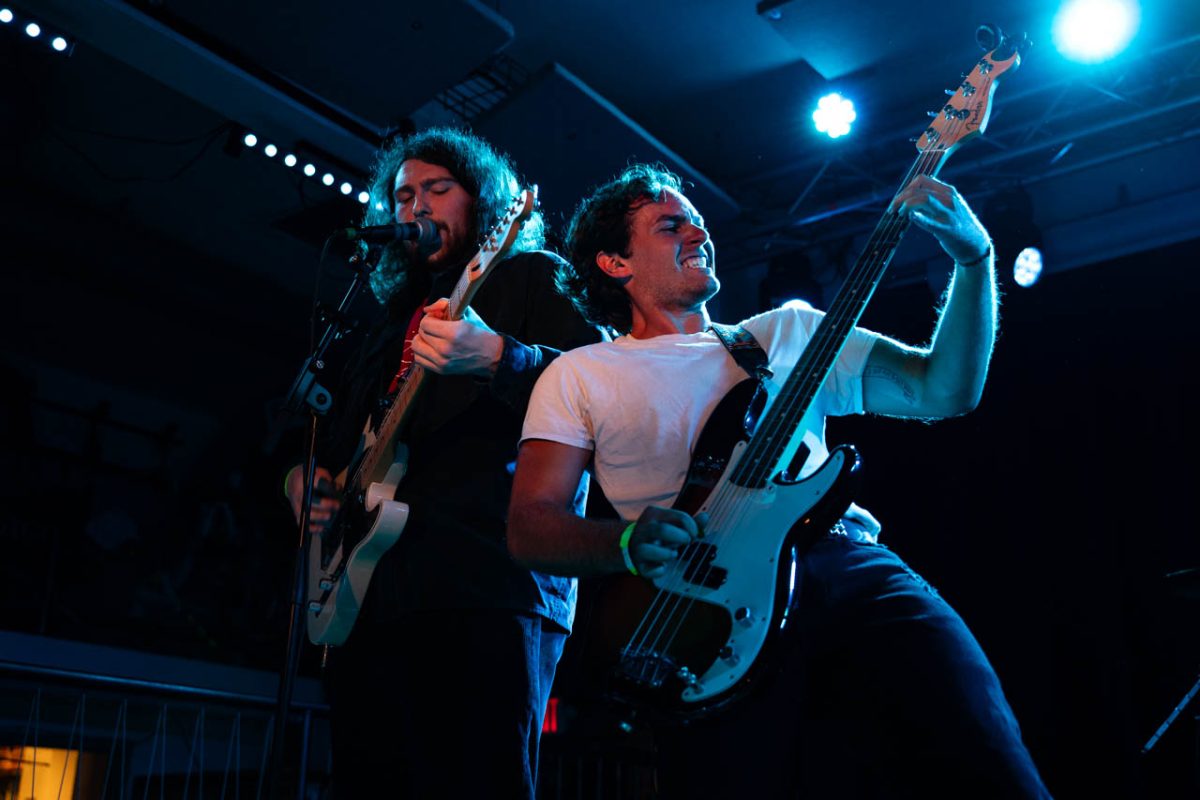Madonna arrived fashionably late at TD Garden Jan. 8, emerging on the smoke-shrouded stage two hours later than expected. But the pop icon’s ardent fans, dressed in “do-it-yourself” renditions of her greatest looks, didn’t seem to mind — it was finally time to celebrate.
And celebrate they did, as “The Celebration Tour,” a two-plus hour exaltation of Madonna’s decades-spanning discography, left the crowd utterly hypnotized throughout, with the oft-provocative visuals impossible to turn away from. For anyone familiar with Madonna and her illustrious career, this should come as no surprise; if there’s one thing she’s known for, it’s her use of striking, yet sometimes controversial, imagery.
For the few with no background knowledge of the artist, “The Celebration Tour,” which is split into seven distinct acts, has them covered. The show recounts several of Madonna’s career milestones, largely in chronological order, through the aforementioned visuals and, on occasion, direct address from the singer herself.
Toward the top of the show, for instance, Madonna, having just finished an explosive opening number (one that featured snippets of the artist’s best-known hits, like “Vogue” and “Material Girl”), sat down and introduced the crowd to herself from 40 years ago, represented by a dancer who (thanks to the flesh-colored mask they donned) resembled a mannequin styled with a navy vest and a black leather cap. Between swigs of a beer bottle, which she later tossed into the sea of raucous fans on the floor, Madonna explained how she left Detroit for New York City in the hopes of becoming a professional dancer, only to turn to singing when she realized it was more lucrative.
Though she spelled out her history plainly in this opening moment, the bulk of her life story, with all of its ups and downs, was conveyed primarily through images. Some were projected on screens while others were conjured on stage — and they proved to be emotionally charged, eliciting cheers, tears and everything in between.
For example, not too long after introducing her younger self, Madonna explored her relationship with members of the LGBTQ+ community during the height of the HIV/AIDS epidemic, singing “Live to Tell” while images of those who lost their lives to the illness — Keith Haring, Freddie Mercury and countless others, some celebrities, some not — populated the various screens throughout the venue. This moment — so visceral, so devastating — was an undeniable standout that effectively conveyed the Queen of Pop’s well-known bond with the marginalized community.
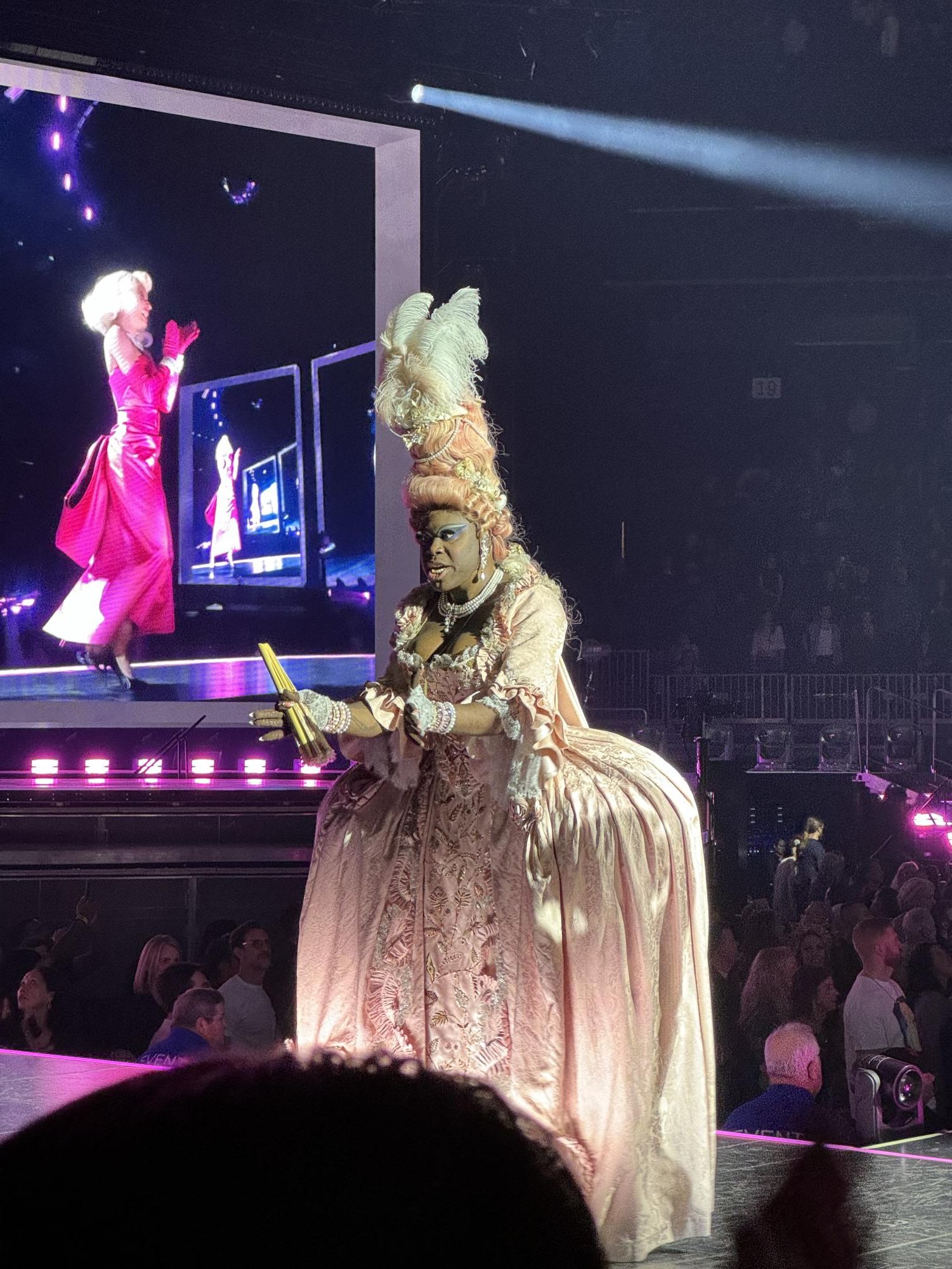
Madonna further examined her association with the LGBTQ+ community during an elaborate and jovial rendition of “Vogue,” the 1990 track inspired by voguing, a dance originating from New York’s underground ballroom scene. The segment featured dancers, all dressed up to compete in the various categories found in a drag ball, strutting about the stage and, eventually, voguing down a makeshift runway. Madonna, sitting comfortably at the end of the runway, would hype them up before eventually awarding them a score — always a 10.
This rendition of “Vogue” also, to the elation of attendees, featured an appearance from season eight winner of “RuPaul’s Drag Race” Bob the Drag Queen, dressed in a shimmering black suit with a sparkling silver bowler hat, who introduced Madonna at the very beginning of the show.
He would occasionally interject with a fun comment or two, though, perhaps most notably, he additionally sang some of the lyrics of Beyoncé and Madonna’s “BREAK MY SOUL (THE QUEENS REMIX),” a song that, unlike “Vogue,” directly references those responsible for inspiring it by citing the various houses that competed at drag balls throughout the 1980s. In having Bob do this, Madonna is, in a way, acknowledging just how much she owes to queer people of color.
However, not every number was illuminating. Unfortunately, Madonna’s tribute to the late Michael Jackson, the king to her queen, came across as tacky and uninspired, especially compared to the other inventive moments surrounding it. Projected on the screens were the silhouettes of young Madonna and Jackson, dancing together while “Beat It” and “Like a Virgin” played over the speakers. On occasion, photos of the pair appeared on the smaller screens populating TD Garden.
This moment was likely included so that Madonna and her dancers could change and mentally prepare for the following number, “Bitch I’m Madonna.” However, this reality doesn’t excuse the fact that this moment, meant to celebrate the world’s most acclaimed pop stars, came across as hollow, bringing the show to a grinding halt.
Save for this low-energy moment, though, “The Celebration Tour” was an unequivocal success, one featuring everything a Madonna fan could ever want — an uplifting of queer voices, a history lesson of an internationally recognized artist, an implementation of biblical imagery that, for some, could be perceived as blasphemous and, of course, the sultry vocals and seductive dance moves of the legend herself, Madonna.
